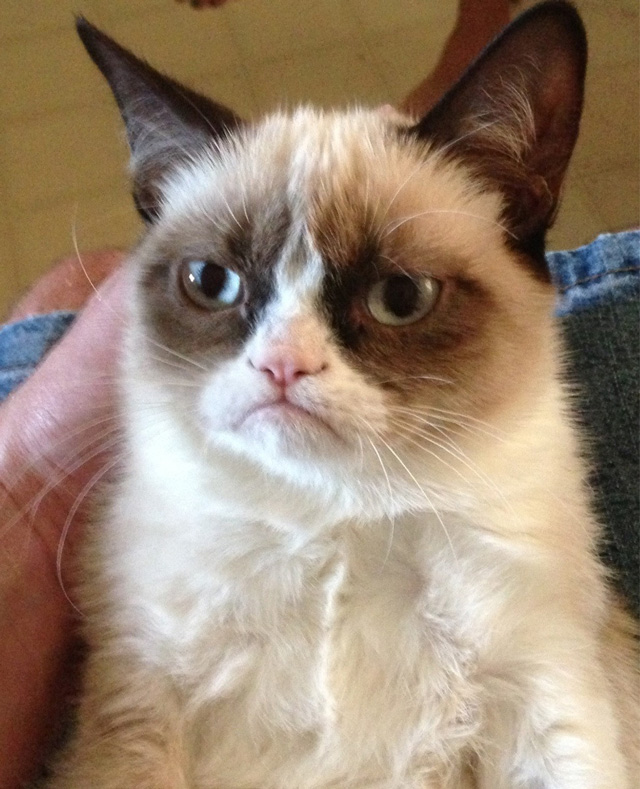Senin, 24 Desember 2012
Jumat, 14 Desember 2012
Formula One Fatal Accidents (part 2)
6. Tom Pryce
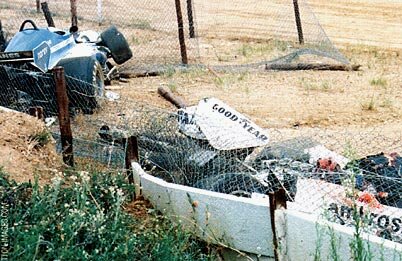
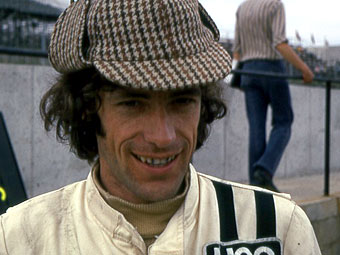

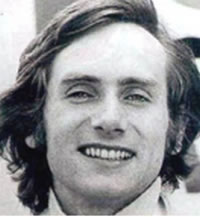


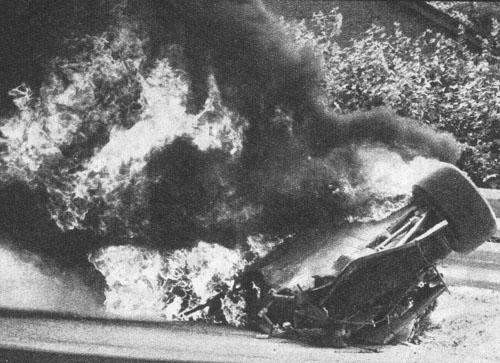

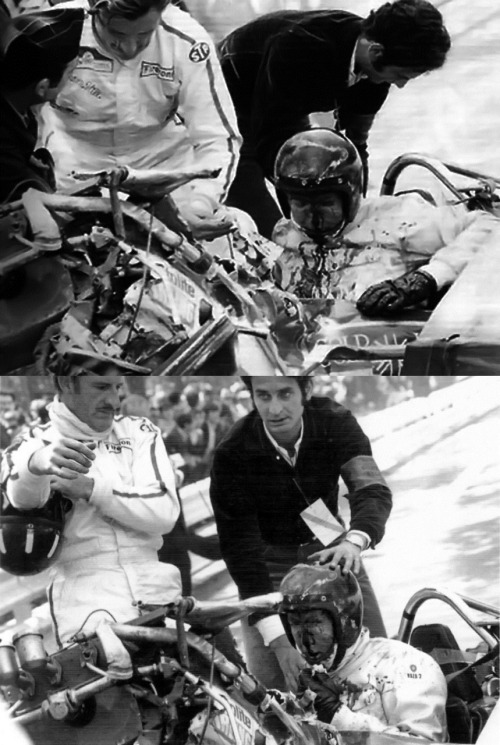
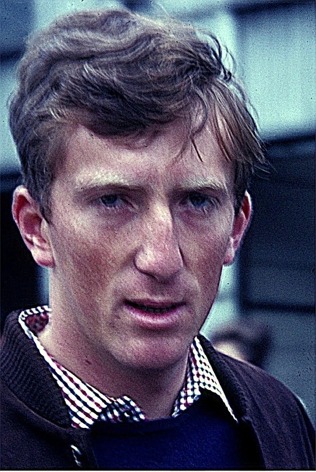


Tom Pryce began his final race weekend, the 1977 South African Grand Prix at Kyalami, by setting the fastest time in the Wednesday practice session, held in wet weather. Pryce posted a time of 1 minute 31.57 seconds with the next best, the eventual 1977 World Champion Niki Lauda, a full second slower. The weather dried up prior to the Thursday session, and he slipped back down the grid to fifteenth place, almost two seconds slower than James Hunt's pole position time.
The Welshman's DN8 made a poor start to the Grand Prix and by the end of the first lap was in last place. Pryce started to climb back up the field during the next couple of laps, overtaking Brett Lunger and team mate Renzo Zorzi on lap two, and Alex Ribeiro and Boy Hayje the following lap. By lap 18 Pryce had moved from 22nd to 13th place.
The situation caused two marshals from the pit wall on the opposite side of track to intervene. The first marshal to cross the track was a 25-year oldpanel beater named William (Bill). The second was 19-year old Frederik Jansen Van Vuuren, commonly known as Jansen Van Vuuren, who was carrying a 40 lb fire extinguisher. George Witt, the chief pit marshal for the race, said that the policy of the circuit was that in circumstances involving fires, two marshals must attend and a further two act as back-up in case their extinguishers were not effective enough. Witt also recalled that both Bill and Van Vuuren crossed the track without prior permission. The former only just made it safely across the track, but the latter did not. As the two young men started to run across the track, four cars driven by Hans-Joachim Stuck, Pryce, Jacques Laffite and Gunnar Nilssonwere exiting the final corner and coming onto the main straight.On lap 21, Zorzi pulled off to the left side of the main straight, just after the brow of a hill and a bridge over the track. The Italian was having problems with his fuel metering unit, and fuel was pumping directly onto the engine, which then caught fire. Zorzi did not immediately get out of his car as he was experiencing trouble in disconnecting the oxygen pipe from his helmet.
The impact with the fire extinguisher had wrenched Pryce's helmet upward sharply, and he had been partially decapitated by the strap. Death was almost certainly instantaneous. Pryce's Shadow DN8, now with its driver dead at the wheel, continued at speed down the main straight towards the first corner, called Crowthorne. The car left the track towards the right, scraping the metal barriers before veering back onto the track after hitting an entrance for emergency vehicles. It then hit Jacques Laffite's Ligier, sending both Pryce and Laffite head-on into the barriers. Van Vuuren's injuries were so severe that, initially, his body was only identified after the race director had summoned all of the race marshals and he was not among them. Pryce was directly behind Stuck's car along the main straight, Stuck himself sensed Van Vuuren and moved to the right to avoid both marshals, missing Bill by what Tremayne reports to have been a matter of "millimetres". From his position directly behind Stuck, Pryce could not see Van Vuuren and was unable to react as quickly as Stuck had done. He struck the teenage marshal at approximately 270 km/h (170 mph). Van Vuuren was thrown into the air and landed yards in front of Zorzi and Bill. He died upon impact, his body being literally torn in half by Pryce's car. The fire extinguisher he had been carrying smashed into Pryce's head, before striking the Shadow's roll hoop. The force of the impact was such that the extinguisher was thrown up and over the adjacent grandstand. It came to ground in the car park to the rear of the stand, where it hit a parked car and jammed its door shut.
The eventual race winner was Austrian Niki Lauda, this being his first win since his near fatal accident during the 1976 German Grand Prix. At first he announced it was the greatest victory of his career, but when told on the victory podium of Pryce's death, he said that "there was no joy after that".
7. Helmuth Koinigg


After a good showing at the 1974 Canadian Grand Prix, Koinigg was beginning to establish himself as a good prospect for 1975. But running near the back in the US Grand Prix at Watkins Glen, Koinigg's car suffered a suspension failure, pitching it head-on into the Armco barrier. The speed at which Koinigg crashed was relatively minor, and he ought to have escaped the scene uninjured. Unfortunately, as with a number of other circuits at that time, the Armco was insecurely installed and the bottom portion of it buckled as the vehicle struck it. The car passed underneath the top portion, which remained intact, decapitating Koinigg and killing him instantly.
8. Francois Cevert


In 1973, the Tyrrell team was back on top in Formula One and Cevert showed he was capable of running with Stewart at almost every race. He finished second six times, three times behind Stewart, who acknowledged that at times the Frenchman had been a very "obedient" teammate. As Cevert began to draw even with Stewart's driving abilities, the Scot was secretly planning to retire after the last race of the season in the United States. For the 1974 season, Cevert would be Tyrrell's team leader.
At Watkins Glen, with Stewart having already clinched his third World Championship, Cevert was killed during Saturday morning qualifying, while battling for pole position with Ronnie Peterson. In the fast left-right uphill combination called "The Esses" Cevert's car was a little too far over towards the left side of the track, getting a bump from the kerbs. This made it swerve towards the right-hand side of the track, where it touched the track's signature powder blue safety barriers causing it to spin and crash into the barriers on the other side of the track at a near 90° angle, uprooting and lifting the barrier. Cevert died instantly of massive injuries inflicted by the barrier, which cut his body in half between his neck and hip.
Cevert had crashed violently in the uphill Esses heading onto the back of the circuit. Fighting the car as he went up the hill, he brushed the curb on the left, whipped across the track and hit the guardrail on the right. The car began to spin, and he swerved back across the track at 150 mph and hit the outside guardrail almost head-on, Stewart said.
Jackie Stewart was one of the first on the scene of Cevert's accident and said later "They [the marshals] had left him [in the car], because he was so clearly dead." Stewart immediately left the scene of the accident and returned to the pits. Because of Cevert's death, Tyrell withdrew its entry for this GP, and Stewart did not run his final, and 100th race.
Cevert was 29 years and 224 days old. François Cevert is buried in the Cimetière de Vaudelnay in the village of Vaudelnay, Maine-et-Loire.
9. Roger Williamson


After his Formula One debut at the 1973 British Grand Prix, Williamson's second Formula One appearance was at the 1973 Dutch Grand Prix at Zandvoort Circuit. On his eighth lap, a suspected tyre failure caused his car to flip upside down and catch fire. Williamson had not been seriously injured by the impact, but was trapped under the car. The track marshals were both poorly trained and badly equipped, and could not assist him. Another driver, David Purley, upon witnessing the crash, abandoned his own race and pulled over in a desperate and valiant attempt to rescue Williamson. He ran across the track to Williamson's car and tried to turn it upright. When no-one came to help, he crossed the track and returned with a fire extinguisher. He emptied it on the car and signaled for others to help. Purley was unable to put out the fire or turn the car upright. By the time the first fire engine arrived and the fire was extinguished, Williamson had died ofasphyxiation. As most racers mistakenly identified Purley as the driver of the crashed car, none of them stopped to help and the race continued, even as Purley stood on the circuit and gestured with his hands to stop.
In 2003, on the thirtieth anniversary of his fatal crash, a bronze statue of Williamson was unveiled at the Donington Park circuit in his native Leicestershire. Then-owner Tom Wheatcroft had provided financial backing to Williamson, and described the day Williamson died as "the saddest day of my life".
10. Jochen Rindt


On the following day, Rindt ran with higher gear ratios fitted to his car to take advantage of the reduced drag, increasing the car's potential top speed to 205 mph (330 km/h). On Rindt's fifth lap of the final practice session, Hulme, who was following, reported that under braking for the Parabolica corner: "Jochen's car weaved slightly and then swerved sharp left into the crash barrier." A joint in the crash barrier parted, the suspension dug in under the barrier, and the car hit a stanchion head on. The front end of the car was destroyed. Although the 28 year old Rindt was rushed to hospital, he was pronounced dead. Rindt was in the habit of using only four points on the five point harness then available and not wearing the crotch straps, as he wanted to be able to get out of the car quickly in the event of fire. As a result upon impact he slid under the belts and suffered fatal chest and throat injuries. He was the second Lotus team leader to be killed in two years, as Jim Clark had been killed in 1968 in a Formula 2 race at Hockenheim. An Italian court later found that the accident was initiated by a failure of the car's right front brakeshaft, but that Rindt's death was caused by poorly installed crash barriers.
Rindt is buried at the central cemetery (Zentralfriedhof) in Graz.
At the time he died Rindt had won five of that year's ten Grands Prix, which meant that he had a strong lead in the World Championship. At that stage he theoretically could have been overtaken by Ferrari driver Jacky Ickx. However Rindt's Lotus team mate, Emerson Fittipaldi, won the penultimate Grand Prix of the year at Watkins Glen, USA, depriving Ickx of the points he needed to win the title, and so Rindt became motor racing's only posthumous World Champion. The trophy was presented to his Finnish widow Nina Rindt nee Lincoln, daughter of famous Finnish racer, Curt Lincoln. It was later learned that Jochen had already promised Nina he would retire from F1 if he won the world championship.
Formula One Fatal Accidents (part 1)
This is the list of people that died when race/qualifying in Formula One
1. Ayrton Senna


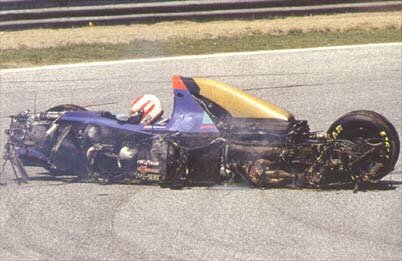
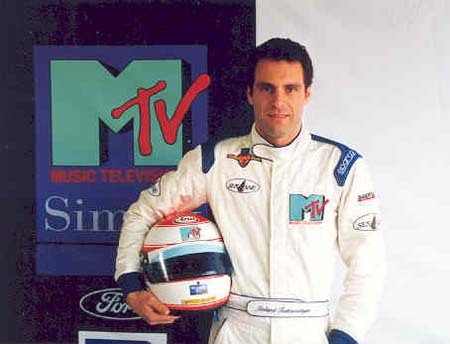






1. Ayrton Senna


At the start, Pedro Lamy and JJ Lehto were involved in an accident. Track officials deployed the Opel Vectra safety car, driven by Max Angelelli at the time, to slow down the field and allow the debris from the starting accident to be removed. The cars proceeded under the safety car for 5 laps. Before the sixth lap, David Brown told Senna via pit to car radio that the safety car was pulling off with the message being acknowledged.
On lap 7, the second lap at racing speed, Senna's car left the racing line at the 190 mph Tamburello corner, ran in a straight line off the track and struck an unprotected concrete barrier. Telemetry shows he left the track at 310 km/h (190 mph) and was able to slow the car down by braking to 218 km/h (135 mph) in slightly under 2 seconds before hitting the wall. The car hit the wall at a shallow angle, tearing off the right front wheel and nose cone, and spun to a halt. After Senna's car came to a halt, he remained motionless in the cockpit. What had likely happened was that the right front wheel had shot up upon impact and entered the cockpit area where Senna was sitting. It struck the right frontal area of his helmet, and the violence of the wheel's impact pushed his head back against the headrest, causing fatal skull fractures. A piece of upright attached to the wheel had partially penetrated his Bell M3 helmet and caused a trauma to his head. In addition, it appeared that a jagged piece of the upright assembly had penetrated the helmet visor just above his right eye. Senna was using a medium sized (58 cm) M3 helmet with a new "thin" Bell visor. Any one of the three injuries would probably have killed him.
After the crash it was immediately evident that Senna had suffered some form of injury, because of the manner in which his helmet was seen to be motionless and leaning slightly to the side. In the seconds that followed his head was seen to move to one side slightly, causing false hopes to be raised. Moments after the crash, Angelo Orsi, a photographer and a friend of Senna, took photographs of Senna in car after his helmet was removed and Senna being treated before marshals blocked his view. Despite receiving numerous offers, the photographs have only been seen by Orsi and the Senna family who insisted that Orsi did not publish the photographs.
A considerable amount of time passed before medical units came to his aid, with fire marshals having arrived at the car and unable to touch Senna before qualified medical personnel arrived. Senna was pulled out of the car minutes after the accident. Television coverage from an overhead helicopter was seen around the world, as rescue workers gave medical attention. Close inspection of the area in which the medical staff treated Senna revealed a considerable amount of blood on the ground. From visible injuries to Senna's head it was evident to attending medical professionals that Senna had sustained a grave head trauma. An emergency tracheotomy was conducted trackside to establish a secure airway through which the medical personnel could artificially maintain Senna's breathing. The race was stopped one minute and nine seconds after Senna's crash. Williams team manager Ian Harrison went up to race control. Harrison arrived to a scene where many race officials were sensing that Senna's crash had been serious. Bernie Ecclestone later arrived in race control to calm the situation and made use of proper organisation.
Professor Sidney Watkins, a world-renowned neurosurgeon, Formula One Safety Delegate and Medical Delegate, and the head of the Formula One on-track medical team, performed the on-sitetracheotomy on Senna.
Watkins later reported:
He looked serene. I raised his eyelids and it was clear from his pupils that he had a massive brain injury. We lifted him from the cockpit and laid him on the ground. As we did, he sighed and, although I am not religious, I felt his spirit depart at that moment.
Watkins cleared the respiratory passages, stemed the blood flow, replaced blood lost from the accident and immobilised the cervical area. Watkins radioed for a medical helicopter and asked the intensive care anaesthiest, Giovanni Gordini to escort Senna to Maggiore Hospital. Approximately 10 minutes after Senna's crash, a miscommunication in the pits caused a Larrousse car piloted by Érik Comas to leave the pit lane and attempt to rejoin the now red flagged Grand Prix. That incident with Comas was spotted by Eurosport commentator John Watson as the "most ridiculous thing I've ever seen at any time in my life".Frantic waving by the marshals at Senna's crash site prevented the Larrousse from risking a collision with the medical helicopter that had landed on the track.
Senna's car returned to the pitlane where officials impounded it. However, an unidentified person insisted that the data carried on the car should be removed with some data having been recovered. At 3:00pm, the helicopter landed in front of the Maggiore Hospital. Doctors rushed Senna into intensive care for a scan of the brain confirming the diagnosis made on the track. At 3:10pm, Senna's heart stopped beating which led to doctors restarting his heart and was placed on a life-support machine. Shortly before the end of the race, Italian police confiscated Senna's helmet. Senna's brother Leonardo arranged for a priest to perform the last rites which occurred at 6:15pm. Senna's heart stopped beating at 6:37pm and it was decided not to restart it. Senna was prounonced dead at 6:40pm with the official time of death at 2:17pm.
At the hospital it was revealed that nurses had discovered a small furled Austrian flag hidden in the sleeve of Senna's race overalls. Journalists concluded he had intended to fly it from his cockpit after the race, and dedicate what could have been his 42nd Grand Prix victory to the memory of Roland Ratzenberger.
Sometime after the race, Ian Harrison was called by an Italian lawyer informing Harrison of Senna's death and that it was being treated as a "road traffic accident". Early in the morning of 2 May, Harrison was called by another lawyer who took him to a mortuary. Harrison decided not to see Senna's body upon being asked.
2. Roland Ratzenberger


Ratzenberger was killed during qualifying for the San Marino Grand Prix at the Imola circuit on Saturday 30 April 1994. He went off-track on the previous lap, damaging his front wing, but rather than come into the pits he continued since he was competing for the final grid spot. The high speed on the back straight, and therefore high downforce, finally broke the wing off, sending it under the car. His car failed to turn into the Villeneuve Corner and struck the outside wall at 195.68 mph (314.9 km/h).
The cause of death was a basilar skull fracture.
Bernie Ecclestone persuaded the Simtek team to take part in the race the following day to overcome the shock. Out of respect, Ratzenberger's spot on the starting grid was left empty. Ratzenberger's team mate,David Brabham, retired after 27 laps.He was the first racing driver to die at a Grand Prix weekend since the 1982 season, when Riccardo Palettiwas killed at the Canadian Grand Prix, coincidentally at the Circuit Gilles Villeneuve. He was the first driver to die in an F1 car since Elio de Angelis during testing in 1986.
Three-time world champion Ayrton Senna was killed in another accident that brought the sport of Formula One under international scrutiny. The double tragedy was marked before the start of the next race in Monaco, with the front row of the grid left empty and the two slots painted with a Brazilian and Austrian flag.
While Ratzenberger's death was overshadowed to some extent by Senna's, barely 24 hours later, his death nonetheless had one lasting legacy. On 1 May 1994, during the customary drivers' briefing, the remaining drivers agreed to the reformation of the Grand Prix Drivers' Association, with Senna,Gerhard Berger and Michael Schumacher as its first directors. The Association subsequently pressed for improvements to car and circuit safety in the wake of Imola and other serious crashes during the 1994 season; in 2003 the FIA mandated the use of the HANS device, designed to prevent the type of injury suffered by Ratzenberger.
When track officials examined the wreckage of Senna's racing car, they found a furled Austrian flag. Senna had planned to raise it after the race, in honour of Ratzenberger.
FIA President Max Mosley attended the funeral of Ratzenberger, despite the overwhelming attention on Senna's funeral, both in the world of motorsport and worldwide. In a press conference ten years later Mosley said, "'Roland had been forgotten. So I went to his funeral because everyone went to Senna's. I thought it was important that somebody went to his." Other members of the Formula 1 community who attended were Ratzenberger's compatriots Karl Wendlinger and Gerhard Berger.
Ratzenberger was supposed to drive later that year in the Le Mans 24 Hours for Toyota. Eddie Irvine took his place in the team, and Roland's name was left on the car (which would go on to take second place overall) as a tribute.
Roland Ratzenberger is buried in Maxglan, Salzburg Austria.
3. Riccardo Paletti


Paletti qualified for the Canadian Grand Prix on Sunday June 13, 1982, the first time he would start successfully in a full line-up. At the start, the lights took an unusually long time to turn to green. During this time, Didier Pironi, who had the pole position, stalled the engine of his Ferrari. Pironi lifted his hand to signal the problem, but there was no action for signalling the yellow to abort the start. The lights switched to green and the other cars swerved across the track, trying to squeeze past Pironi's stationary car. Raul Boesel just clipped the back left of the Ferrari, spinning his March into the path of Eliseo Salazar and Jochen Mass. Salazar, Boesel and Mass suffered minor impacts but it looked as if everyone had passed the Ferrari without serious consequences. However, Paletti could not react in time and slammed into the rear of the stranded Ferrari at 180 km/h (around 110 mph), catapulting it into the path of Geoff Lees. The Osella's nose was crushed in severely.
Due to the force of the severe impact, Paletti sustained heavy chest injuries and was lying unconscious in his car, wedged against the steering wheel. Didier Pironi and Sid Watkins, the FIA's head doctor, were on the scene to stabilise and assist Paletti. As Watkins climbed over the wreckage of the Osella, the petrol from the fuel tank ignited, enveloping the car in a wall of fire. When the fire was finally put out, the injured Paletti was without a pulse. It took the rescue workers 25 minutes to cut him out safely from his wrecked car, as the sparks caused by the cutting equipment threatened to re-ignite the petrol on the track. He was flown by a medical helicopter to the Royal Victoria Hospital, where he died soon after arriving. His mother was watching from the stands, where they were to celebrate his 24th birthday later that week. It is said that Paletti was heavily intoxicated from breathing in the exhausting foam used to contain the car fire, and that this could have been fatal given the chest injuries that made the respiration difficult.
Paletti was the second fatality in Formula One that year. Just five weeks before, Gilles Villeneuve had a fatal crash during qualifying for the Belgian Grand Prix at Zolder. Paletti would be the last driver to die at a Grand Prix meeting for the next 12 years until the 1994 San Marino Grand Prix, which took the lives of Roland Ratzenberger during qualifying and triple world champion Ayrton Senna during the Grand Prix itself.
As a tribute to the young Italian, the racetrack at Varano de' Melegari, in the province of Parma (northern Italy) is now called the Autodromo Riccardo Paletti.
His body is buried in the Cimitero Maggiore di Milano.
4. Gilles Villeneuve


On May 8, 1982, Villeneuve died after an accident during the final qualifying session for the Belgian Grand Prix at Zolder. At the time of the crash, Pironi had set a time 0.1s faster than Villeneuve for sixth place. Villeneuve was using his final set of qualifying tyres; some say he was attempting to improve his time on his final lap. Some suggest he was specifically aiming to beat Pironi. However, Villeneuve's biographer Gerald Donaldson quotes Ferrari race engineer Mauro Forghieri as saying that the Canadian, although pressing on in his usual fashion, was returning to the pits when the accident occurred. If so, he would not have set a time on that lap.
With eight minutes of the session left, Villeneuve came over the rise after the first chicane and caught Jochen Mass travelling much more slowly through Butte, the left-handed bend before theTerlamenbocht double right-hand section. Mass saw Villeneuve approaching at high speed and moved to the right to let him through on the racing line. At the same instant Villeneuve also moved right to pass the slower car. The Ferrari hit the back of Mass' car and was launched into the air at a speed estimated at 200–225 km/h (120–140 mph). It was airborne for more than 100 m before nosediving into the ground and disintegrating as it somersaulted along the edge of the track. Villeneuve, still strapped to his seat, but without his helmet, was thrown a further 50 m from the wreckage into the catch fencing on the outside edge of the Terlamenbocht corner.
Several drivers stopped and rushed to the scene. John Watson and Derek Warwick pulled Villeneuve, his face blue, from the catch fence. The first doctor arrived within 35 seconds to find that Villeneuve was not breathing, although his pulse continued; he was intubated and ventilated before being transferred to the circuit medical centre and then by helicopter to University St Raphael Hospital where a fatal fracture of the neck was diagnosed. Villeneuve was kept alive on life support while his wife travelled to the hospital and the doctors consulted with specialists worldwide. He died at 9:12 that evening.
5. Ronnie Peterson


The 1978 Italian Grand Prix at Monza started badly for Peterson. In practice he damaged his Lotus 79 race car beyond immediate repair and bruised his legs in the process. Team Lotus had a spare 79, but it had been built for Andretti, and the taller Peterson did not fit comfortably inside. The team's only other car was a type 78, the previous year's car, which had been dragged around the F1 circuit that season with minimal maintenance.
At the start of the race, the race starter threw the green light before the field was ready. The cars from fourth row onwards (Peterson started from the third) were rolling when the green light came on and got a jump on those ahead, resulting in an accordion effect as the cars approached the chicane, bunching them tightly together. The front four, Andretti, Villeneuve, Jabouille and Lauda, were far enough ahead to avoid any drama, but Peterson had made a poor start from fifth and was immediately passed by Alan Jones, Jacques Laffite and John Watson.
Jody Scheckter and Riccardo Patrese, starting 10th and 12th, had moved to the right across the line that separated the Grand Prix front straight from the approach to the old Monza banking. While Scheckter's Wolf was able to rejoin the track well ahead of the bunching pack, Patrese moved back in just ahead of James Hunt, who feinted left and collided with Peterson, with Vittorio Brambilla, Carlos Reutemann, Hans-Joachim Stuck, Patrick Depailler, Didier Pironi, Derek Daly, Clay Regazzoni and Brett Lunger all involved in the ensuing melee.
Peterson's Lotus went into the barriers hard and caught fire before bouncing back into the middle of the track. He was trapped in the burning wreck, but Hunt, Regazzoni and Depailler managed to free him before he received more than minor burns, while track marshals were extinguishing the car. He was dragged free and laid in the middle of the track fully conscious, his severe leg injuries obvious to all. Hunt later said he stopped Peterson from looking at his legs to spare him further distress.
At the time there was more concern for Brambilla, who was hit on the head by a flying wheel and was slumped comatose in his car (he later recovered and drove on in F1 until 1980). Peterson's life was not seen to be in any danger. Sid Watkins and his medical team headed over Peterson's car to extract him from the wreckage. The injured drivers along with Peterson were taken to a hospital in Milan and the race was restarted when the track had been cleaned up.
At the hospital, Peterson's X-rays showed he had seven fractures in one leg and three in the other. After discussion with him, Peterson was sent to intensive care so that the surgeons would be allowed to operate to stabilize the bones. During the night, bone marrow went into Peterson's bloodstream through the fractures, forming fat globules on his major organs including lungs, liver and brain. By morning he was in full renal failure and was declared dead at 9:55am on September 11, 1978. The cause of death was given as fat embolism.
Teammate Mario Andretti clinched the championship at the race. "It was so unfair to have a tragedy connected with probably what should have been the happiest day of my career", Andretti said, "I couldn't celebrate, but also, I knew that trophy would be with me forever. And I knew also that Ronnie would have been happy for me".
At his funeral, the pallbearers included Ken Tyrrell, Colin Chapman, James Hunt, Jody Scheckter, John Watson, Emerson Fittipaldi and Niki Lauda. Peterson ran a total of 123 Grand Prix races during his career, winning ten of them.
Langganan:
Komentar (Atom)
